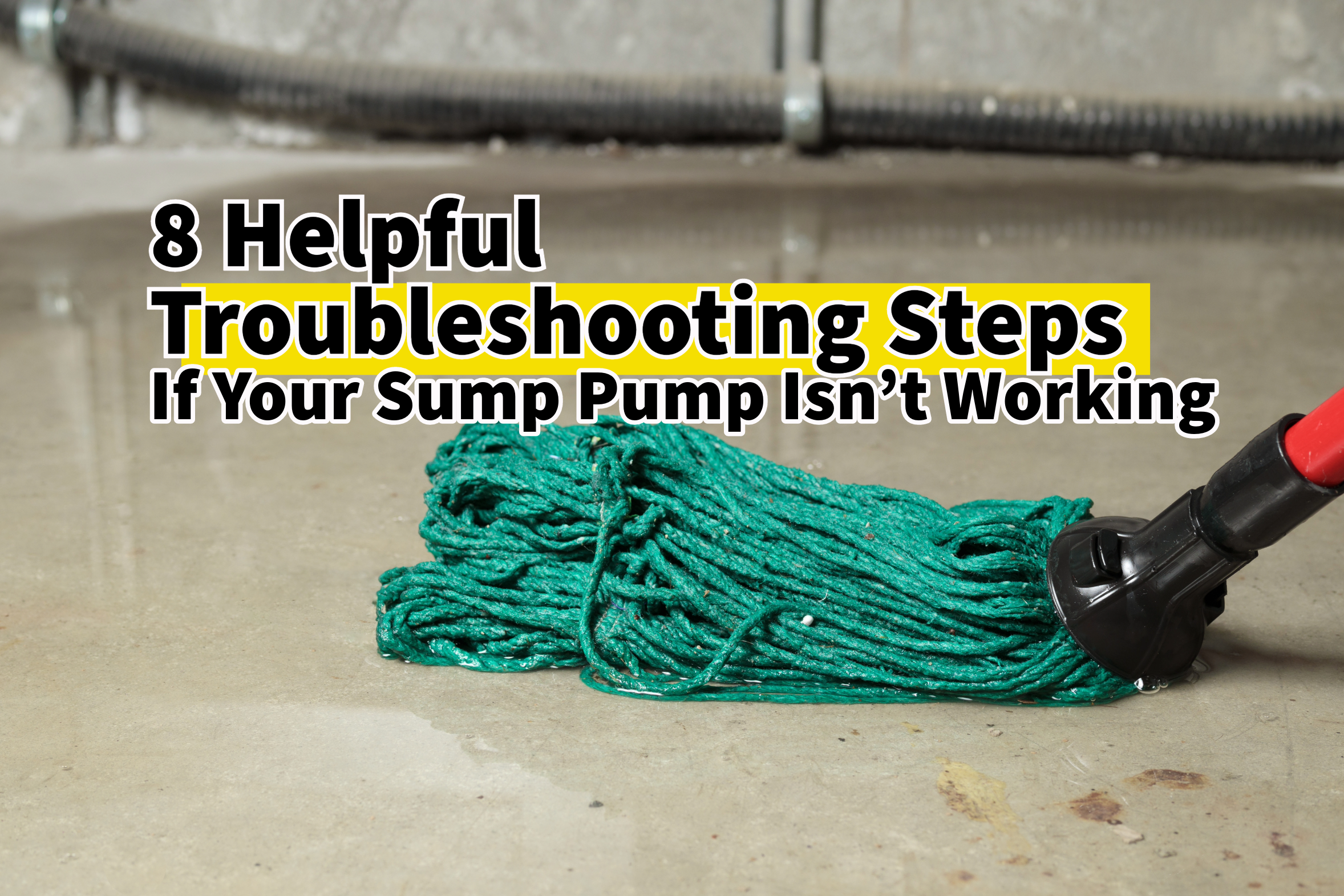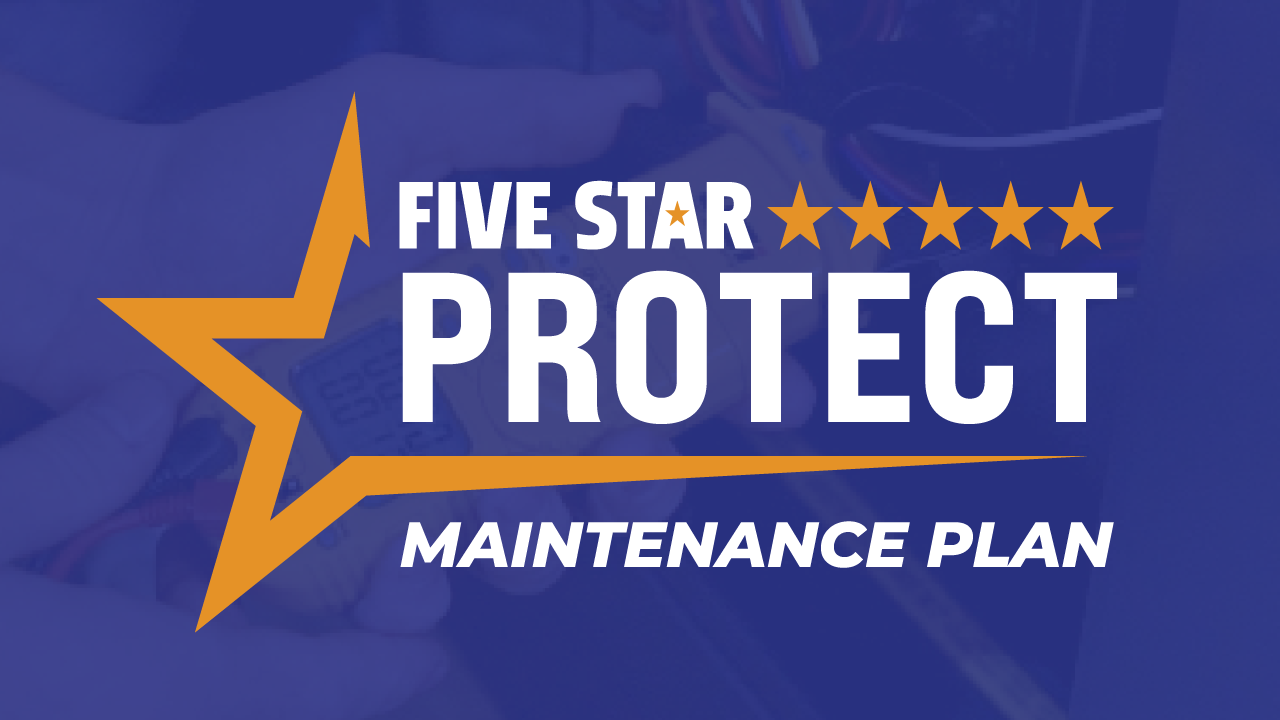Has your sump pump been giving you grief lately? With the recent weather, it’s not uncommon. We all know that Ohio weather leads to its fair share of home-related problems. With the snow melt and rain working overtime in winter, sump pump issues are, let’s say, in full swing. And when your sump pump stops, it’s definitely not something we recommend waiting on; you should aim to get it up and running again as soon as you notice an issue.
Sump pumps are designed to pump water out through the discharge pipe and safely redirect excess water away from your home’s foundation. When a sump pump suddenly stops working, it can quickly lead to basement flooding and other issues. At Centerville Plumbing & Drain, we’ve got you covered. We can help troubleshoot any problems. And you know what? You don’t have to wait until something goes wrong with your sump pump. Take a moment today to familiarize yourself with the various ways to troubleshoot your sump pump problems.
8 Helpful Troubleshooting Steps If Your Sump Pump Isn’t Working:
- Checking the Power Supply: Power outages are one of the main culprits behind sump pumps acting up. Whether it’s a crazy storm or a pesky-tipped circuit breaker, the first thing to check is if your sump pump is actually plugged in and getting power. If not, give the outlet a try with another device to see if it’s the culprit. And hey, sometimes a good ol’ unplug and plug trick will suffice. Just remember, it might only be a temporary fix.
- Testing the Pump Motor: Listen for any weird noises coming from the pump motor. If the motor isn’t running, give the circuit breaker a check and reset it if needed.
- Examining the Pump Basin: It’s time to check out the inside of the pump and see what’s happening. Take a peek at the sump pump basin for any debris, dirt, or even ice buildup. If you spot anything, make sure to remove it to prevent any obstructions to the pump’s impeller.
- Inspecting the Float Switch: Next, let’s check the float switch to make sure it’s moving properly. Sometimes, a pump can stop working if it’s been overworked, especially during the busy seasons. Look out for any debris that needs clearing and see if the float switch moves freely. If the float gets stuck or frozen, it won’t activate the pump as it should.
- Testing the Check (or Overflow) Valve: Make sure to double-check that the check valve is installed properly. You’ll also want to verify that no debris is blocking it. Oh, and keep an eye on the pipe above it too, sometimes it gets clogged and messes up the check valve. If everything’s good, the check valve will stop water from flowing back into the sump pit.
- Inspecting the Discharge Pipe: If your basement is flooded and the water isn’t being discharged away from your home, it’s probably because the discharge pipe is clogged. So, let’s shift your attention to finding and checking the discharge pipe.
- Clearing the Weeping Hole: Another thing you’ll want to check is the weeping hole. Your sump pumps should have a small hole on the discharge pipe that’s designed to release air and keep everything running smoothly. When this weeping hole gets blocked, the pump won’t work like it should. If there’s a clog in the weeping hole, you’ll need to clear it out.
- Considering an Overwhelmed Pump: If your sump pump is not sized properly for your space, it won’t be able to handle the large amounts of water coming its way. If this has been a recurring problem for you, it might be a good idea to think about upgrading to avoid this happening over and over again.
You’ve got this! With a bit of determination and some focused DIY troubleshooting, you should be able to figure out what’s causing your sump pump problem. Dealing with sump pump issues in cold weather is never fun, but remember to prioritize safety above all else! So, take your time, move slowly and carefully as you assess your situation, and go through each troubleshooting step.
Here Are Some Tips for Your Sump Pump:
Here are a few handy tips to keep in mind for the future to help you maintain your sump pump.
Loose debris can be a real pain when it comes to sump pump issues. If there’s a build-up of debris and particles, it can cause annoying clogs and mess with your pump’s performance. Additionally, random objects lying around near the sump pump don’t help either! So, always make sure that your sump pump pit lid is securely in place and sealed up tight, and keep the area around your sump pump clear. That way, you can keep those loose debris and random clutter out of the pit and prevent them from messing with your pump.
Another thing to keep an ear out for is any loud or irregular noises coming from your sump pump. If you hear anything unusual, try to figure out what’s going on. If you’re not sure, give us a call. Being attentive to potential issues will help you catch small problems before they turn into big headaches. That’s why it’s important to regularly check on your sump pump.
WHEN TO CALL PROFESSIONAL HELP:

Still puzzled and wondering what the heck is happening? Don’t worry; we’ve got your back! If you’re still facing the same issue after following these troubleshooting steps, feel free to reach out. We’ll make sure to professionally diagnose the problem and get your sump pump up and running again. It’s super important to have a licensed plumber inspect your sump pump and identify any underlying issues.
Your plumbing system is like the heart of your home, and there can be a lot of things that go wrong with it. That’s why it’s important to trust someone who knows what they’re doing. At Centerville Plumbing & Drain, we’ve got you covered. Our customers mean the world to us. We care about your safety, comfort, and making sure you’re happy.
You can rely on Centerville Plumbing & Drain for all your plumbing woes. Call Centerville Plumbing & Drain today at (937) 240-0169, or schedule an appointment online now by clicking here!




